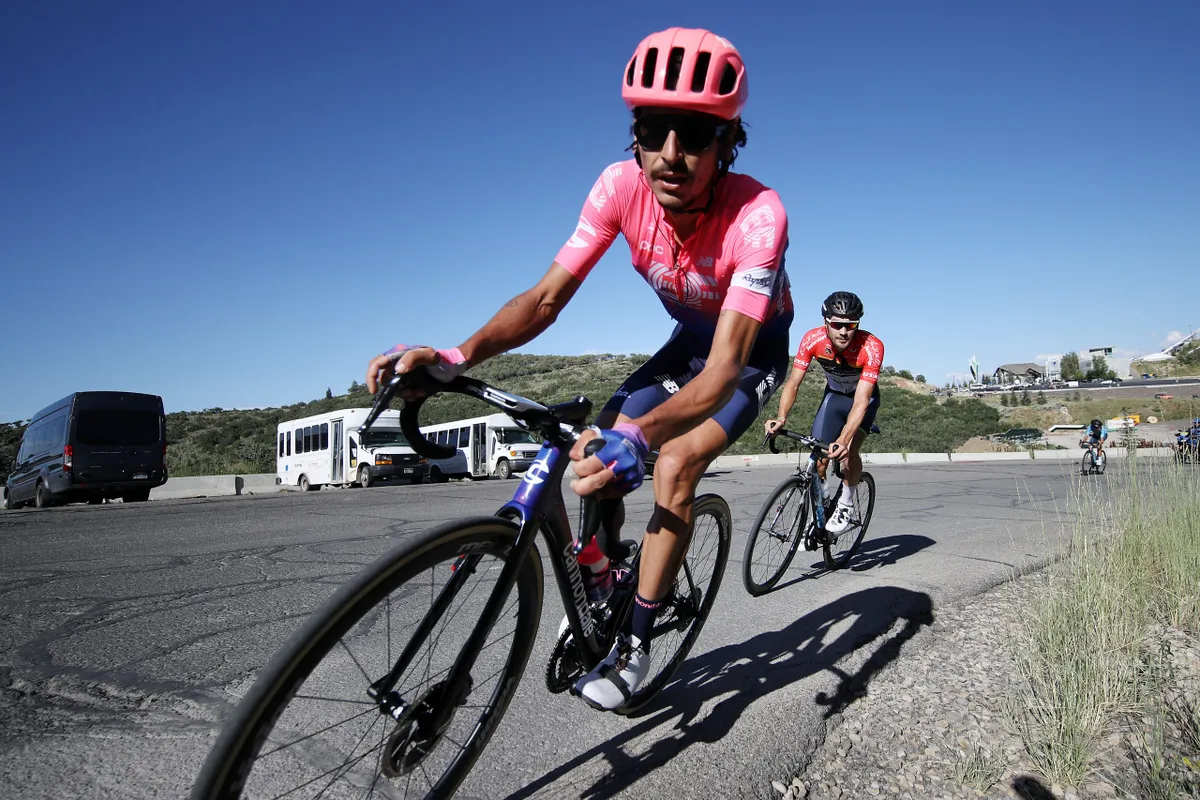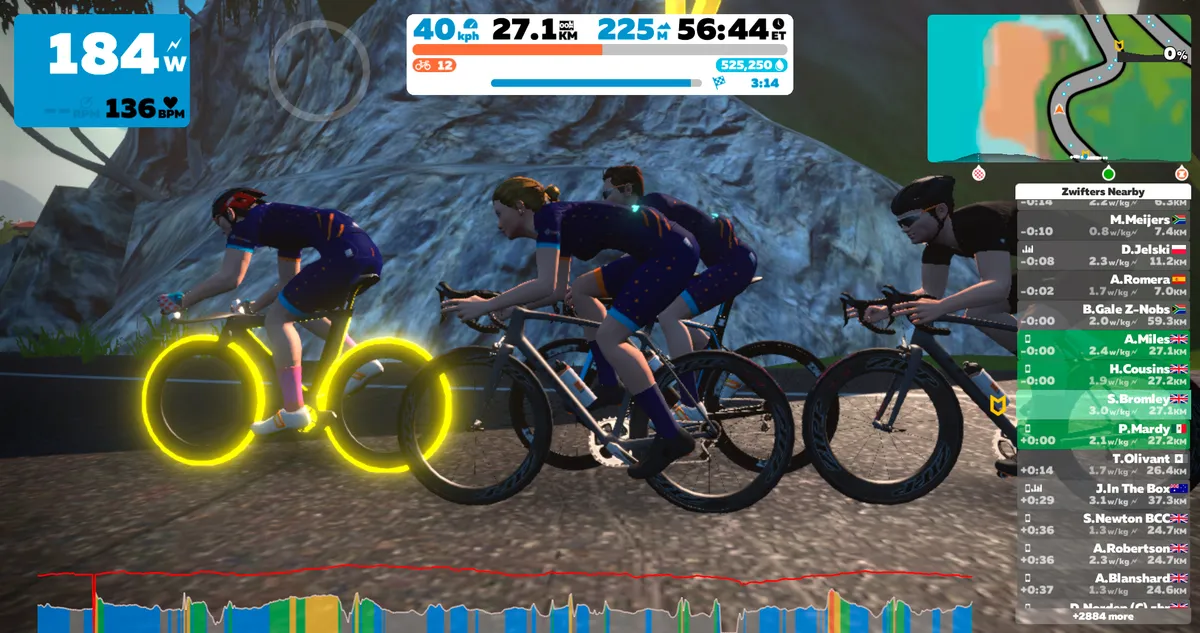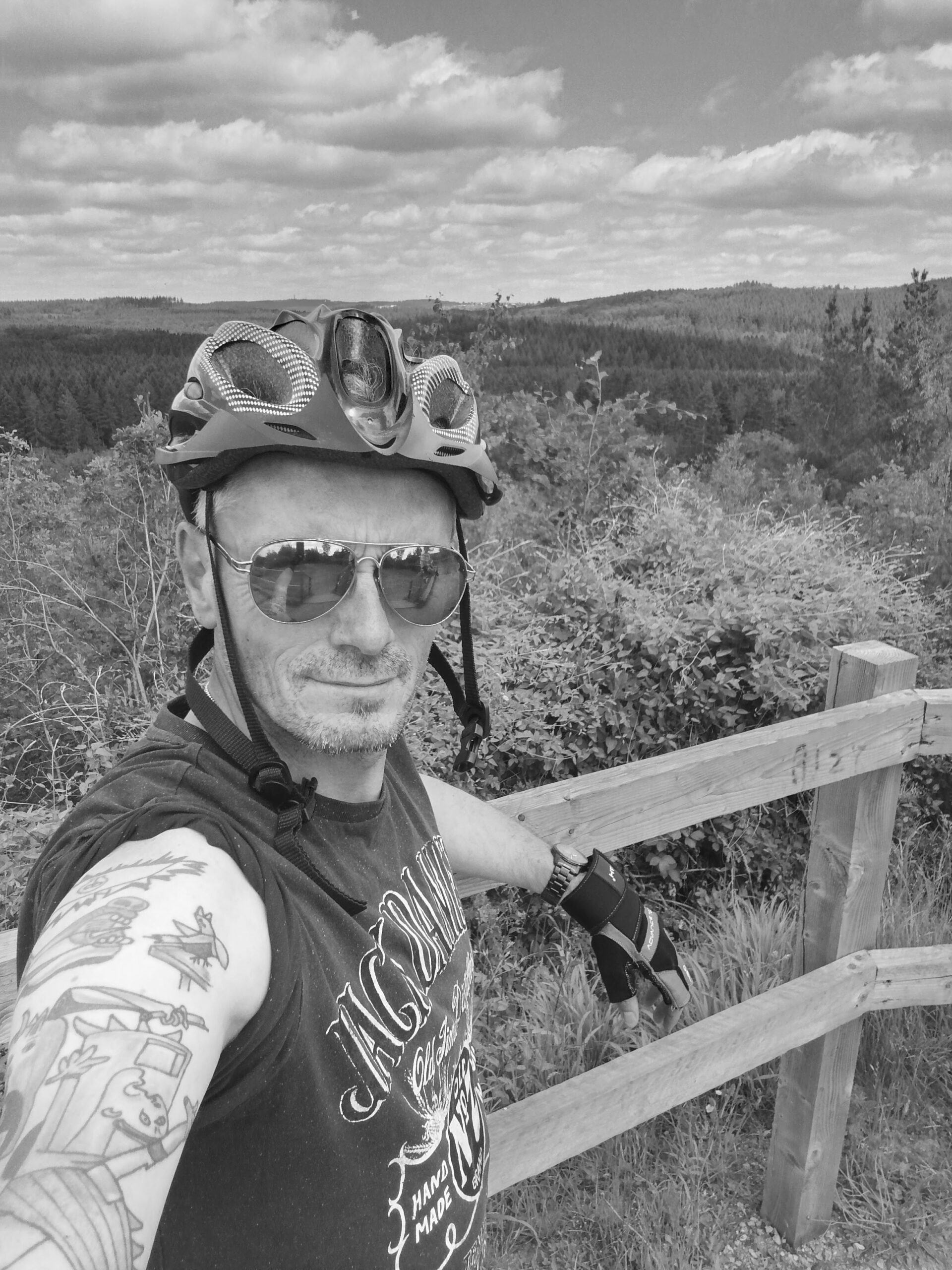We’re led to believe that the more we ride, the faster and longer we’ll go. But what if training efforts are no longer paying off? What if our motivation is waning, we’re succumbing to illness more often and riding our bikes feels more of a chore than a pleasure?
- Base training for cyclists: myth or must-do?
- Exercises you can do off the bike to improve climbing, sprinting and endurance
Training improvement isn’t always a linear process, but when overtraining syndrome (OTS) strikes, performance can fall off a cliff.
OTS is tricky to diagnose and has sparked debate among performance specialists as to its definition before they even get started on the symptoms, causes and potential cures.
“Overtraining syndrome is commonly reported to occur in around 10 to 20 per cent of elite endurance athletes and affects up to 65 per cent of long-distance cyclists at some point during their athletic career. It’s not a marginal problem,” explains Federico Fontana, an exercise physiologist and sport scientist whose work includes looking after Team Novo Nordisk’s unique group of male pro riders, all of whom have Type 1 diabetes.
What is overtraining syndrome (OTS)?

Before you can identify the signs of overtraining syndrome you need to differentiate what it is – and what it is not.
Well before a diagnosis of OTS, you may be overreaching – side effects of a period of hard training where a fall away in performance is apparent but short-lived. This is training you need to do to force your body to adapt and get fitter, but when your body doesn’t get the rest it needs to adapt, overreaching occurs. You suffer from temporary fatigue and a downturn in your capacity to perform at your best for a short time.
Far more serious is OTS – overreaching in the extreme, where a short period of rest isn’t sufficient to reset. It’s not necessarily simply the combination of full-on training and lack of rest – home life and general stress may also be in play.
For an amateur athlete with a job and family life to fit alongside their training, OTS is arguably an easier trap to fall into than it is for the pro athlete, and one that’s harder to escape from.
OTS manifests itself as flu-like symptoms (without signs of infection) and can also include a lack of interest in training, competing and socialising. Other signs include increased daytime sleepiness, waking unrefreshed, reduced appetite, a lack of concentration, mood changes, frequent injuries, increased achiness, anaemia and eating disorders.
“Along with the imbalance in training versus rest, causes can also be the monotony of training, the number and the frequency of competitions, plus personal and emotional difficulties and the emotional demands of the home and work environment,” says Fontana.
Paul Mill, a former pro rider and now lead coach with elitecycling.co.uk, points out that the mental side effects can be as bad as or worse than the physical ones. “That’s because athletes rely on good morale and motivation, and to have no energy or drive is the complete opposite of their normal mental state,” he says. “An athlete can have various issues with the mental state of OTS and it is really important to have a support network to help deal with the correct treatment and keep the drive high.”
Diagnosing OTS
With such a wide range of causes and effects, diagnosing OTS and even differentiating it from forms of overreaching isn’t easy.
When access to laboratories is part of a pro team’s budget, it’s little wonder amateurs would struggle to identify and treat OTS. Not that pros are immune, even with all the support of their sports science entourage. Pressure to perform and the sheer volume and intensity of training and racing combine for a toxic brew.
Team Ineos rider Gianni Moscon’s is the latest in a long line of overtraining stories – he openly put his poor form in 2019 down to riding too much during the off-season. “In the winter I worked like never before. Hours and hours on the bike and specific work. Then in Colombia earlier this year, hours and hours... I came back a corpse. I couldn’t recover because I couldn’t get 10 days away from the bike. My body was exhausted. At the Tour de France I was tired before even starting”, he told La Gazzetta dello Sport.

The consequence of pushing yourself too hard in the saddle isn’t just leaving the likes of Moscon physically fatigued. That ‘corpse’ condition he refers to echoes an autumn 2019 study, published in the scientific journal Current Biology, which found that the brain can also burn out when training and racing pushes the body to extremes.
A group of elite triathletes pushed to the point of overtraining (training load raised by 40 per cent over a three-week period) by a French research team, and compared with a control group, not only performed poorly on cycling tests but MRI scans also revealed that their cognitive abilities were compromised too.
They were found to be more impulsive and even lost their ability to resist the temptation of immediate gratification – so, when asked if they wanted 10 dollars now or 50 dollars in a few months, they were much more likely to take the instant 10 dollar fix, leading the scientists to conclude that overtraining hinders your ability to make reasonable decisions.
Raising the flag
At the elite end of the sport, specialists look for abnormal results in physiological tests to help diagnose OTS.
“Tests include testosterone/cortisol ratio, overnight urinary cortisol/cortisone ratio, maximal heart rate at lactate threshold, and/or decreased maximal lactate concentration and lactate concentration expressed as a percentage of peak blood lactate,” explains Fontana.
Because of the constant monitoring of pro riders, any red flag indicators of OTS should show up through these checks. At any level below, it’s not so easy to spot the signs, as Dan Guillemette, specialist cycling performance physiotherapist at London’s Centre for Health & Human Performance (CHHP) explains.
“It’s dependent on what baseline data you have,” he says. “You can only get a true indicator of physiological dips if you know where your levels are to begin with.

“Measuring your RPE (rate of perceived exertion), heart rate variability and looking at the training stress scores if you are using a coaching platform such as Training Peaks will help. Signs could be that a normal training session feels much harder and your heart responses are different.”
Even then, Fontana says research papers often find that tests come up with inconsistent results when searching for one-off markers of OTS: “There can be confounders, such as time of the day, season, menstrual cycle and nutritional status, which can skewer test results. Likewise, most of the blood parameters (e.g. blood count, creatine kinase, urea, creatinine, liver enzymes, glucose, ferritin, sodium, potassium) are apparently not capable of detecting OTS.”
“A lot of people will only recognise [overtraining] ‘post’ the effects,” says chartered physiotherapist Nichola Roberts, founder of Velophysio. “They’ll look back at a time when they couldn’t shake off a virus or constantly felt like they weren’t performing as they could and realise that they’d been overtraining. Because it’s not as apparent as some injuries, they don’t seek out help for it.
“It may also be a case of denial,” adds Roberts. “Overtraining is quite a negative word for it – plus there’s the implication that you’re not on top of things. Also, you may be ticking all your boxes in terms of output and data but it’s not just about that. It’s about recovery, diet, endocrinology, life stresses and your immune system being depressed. The lines are blurred and while there is this blur, athletes will just push on and keep training.”
Prevention is the cure
The experts are united in agreeing that each cyclist has a different tipping point for overtraining, related to their stress capacity, and that the best method to combat it is to prevent it happening in the first place.
“Recognising OTS in time to stop it ruining your ride is virtually impossible because the only certain sign is a decrease in performance during competition, or training, or testing – but there are practical guidelines to prevent it,” says Guillemette.
Overtraining prevention checklist
- Keep a diary of training load (identify any trends and dips in performance and record how you feel)
- Avoid monotony of training
- Be aware of life stressors and their impact on energy levels and mental focus
- Schedule regular health checks (GP and a coach)
Taking Zwift measures

How we train over the course of the year has changed significantly since the rise of home smart trainers and online training games, such as Zwift.
Where once the winter months were filled with slow base miles, many of us now do hard indoor sessions all year round. Has this increased the risk of OTS?
“It certainly makes sense that the time-crunched athlete who uses the competitive aspects of Zwift may incur some overreaching or overtraining,” suggests Mill.
Set guidelines to your training and work in blocks to ensure you fit in recovery rides or do a different activity that also helps with psychological recovery. Understanding your body is important
Dan Guillemette
“My thoughts regarding all online coaching plans is that, while they are useful, they do not recognise stress, or tell you to rest. It’s easy to throw sessions together during a generic workout plan, but it’s how the training results can be used to interpret fitness and strength, to continue to adapt the training to hit peak fitness for your goal event, that counts.”
While Mill concedes that there are some fantastic platforms, he says more guidance is needed to manage workloads as well as the expectations that are based on the results of sessions.
“If you’re becoming serious about your sport,” says Guillemette, “whether it’s to compete or focus on a specific goal or sportive, then it’s beneficial to engage with someone who has experience of preparing cyclists.
“Set guidelines to your training and work in blocks to ensure you fit in recovery rides or do a different activity that also helps with psychological recovery. Understanding your body is important,” he adds.
“Recognising if you are not recovered sufficiently, i.e. your heart rate is higher than normal, you are feeling tired for longer, your motivation is just not there. Being adaptable and flexible with your training to manage these instances is important to avoid overtraining syndrome. At the end of the day you have to enjoy what you are doing, whatever level you cycle at.”
What it feels like to overtrain…
Lachlan Morton, 28, rides for EF Education First Pro Cycling. In 2014, he took a year out from professional cycling, with overtraining named as part of the problem.
“I used to focus solely on my power output readings to the point of obsessing about them and, suddenly, a 15-minute session could ruin a whole day.
"I was overthinking, mentally overtraining. A fear of failure and then a fear of training dominated my approach and left me in need of a physical and mental break. Now I try to train more freely, I found it too structured before and too power-oriented.
"Somewhere within that mass of data and numbers I lost the instinctive benefit of listening to my body. Remote training has its benefits but you shouldn’t hand your whole cycling experience over to someone on the other side of the world setting targets for you. You need to trust intuition more than Training Peaks.”
Amateur cyclist Andrew Johnson’s overreaching led to injury and a long time on the sidelines.
“About four years ago I was training hard for the Raid Pyrenean (coast-to-coast across the Pyrenees),” explains Johnson, 49, from Farnham in Surrey.
“I was doing a lot of training and intense spin sessions before and after work, to the point where I started to develop a problem.”
Fatigue was followed by an inflamed hamstring and he was forced to pull out of his goal event as he took six weeks off cycling completely to recover.
He eased his way back, but broke down again and spent the whole next season off the bike, suffering from a bio-mechanical imbalance in his hips.
Andrew finally got a breakthrough via a chiropractor who addressed the underlying issue and he’s now riding regularly again.
“Overtraining had been the catalyst for my issues and the trigger for my hamstring problems – it took me a long time seeing a number of different experts to eventually find the right person.”
